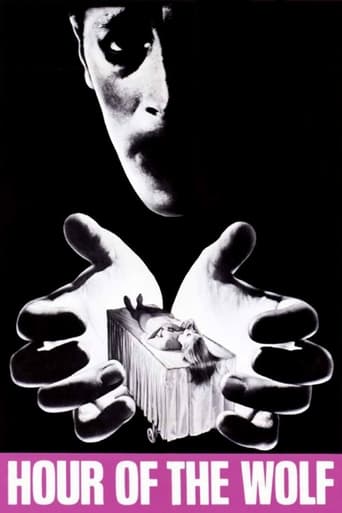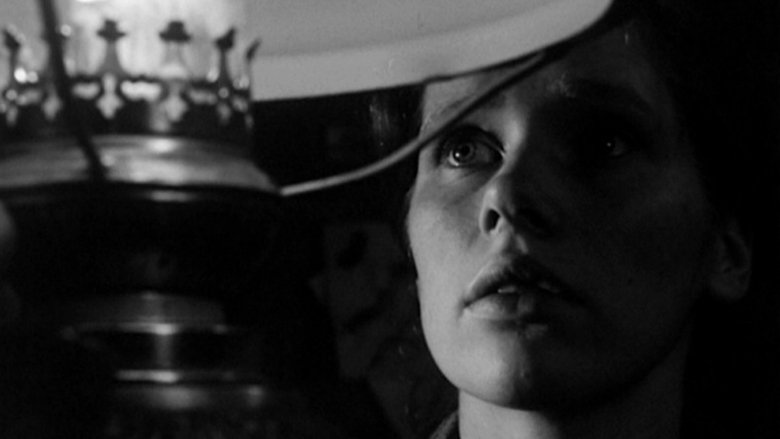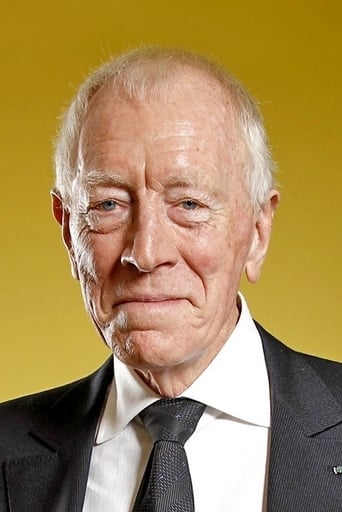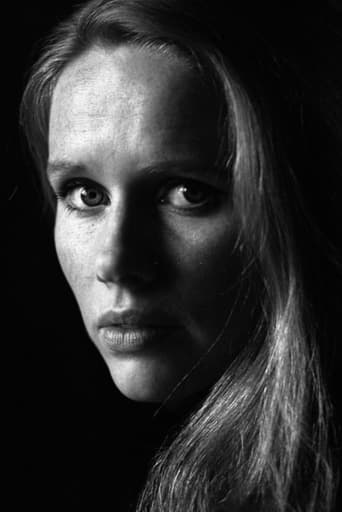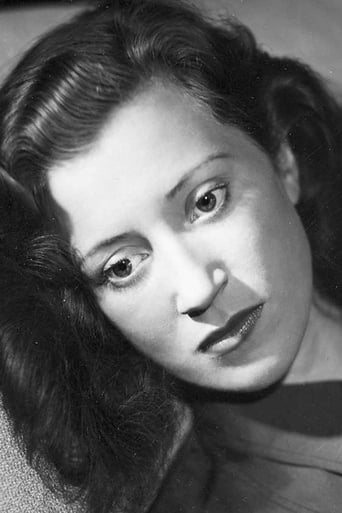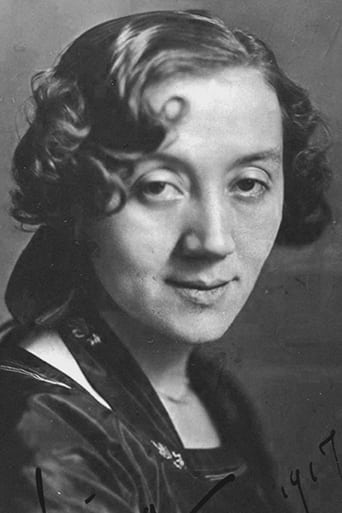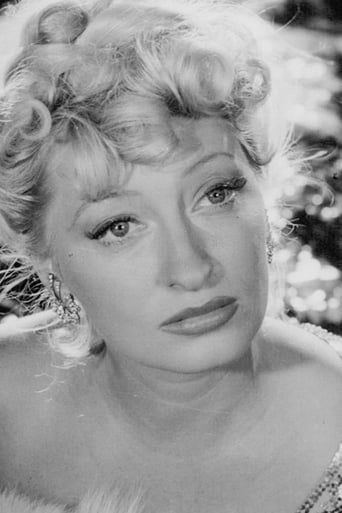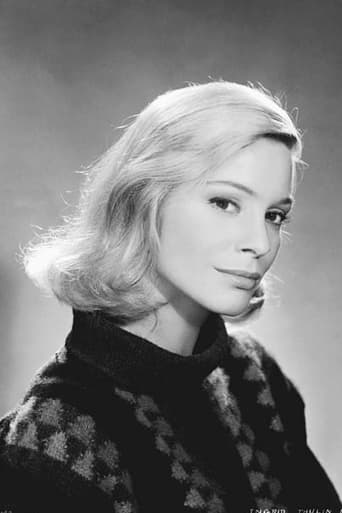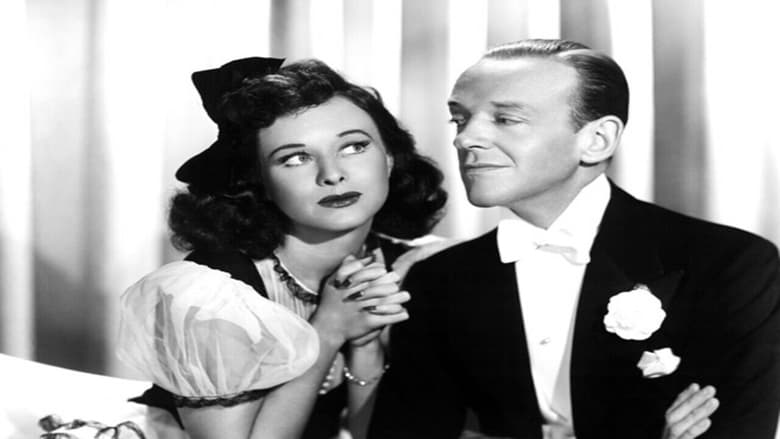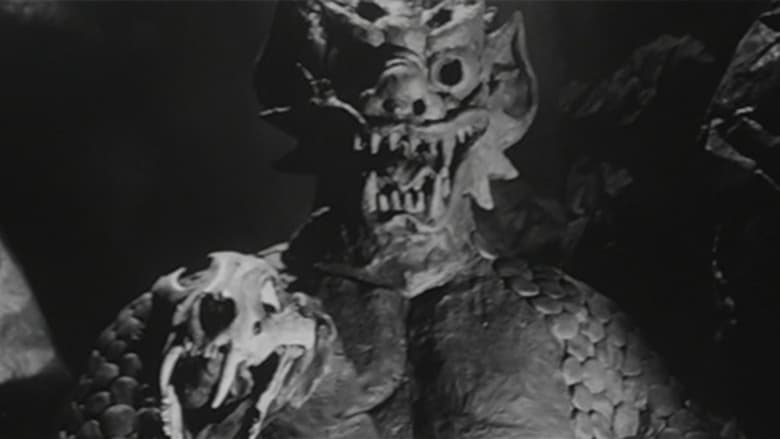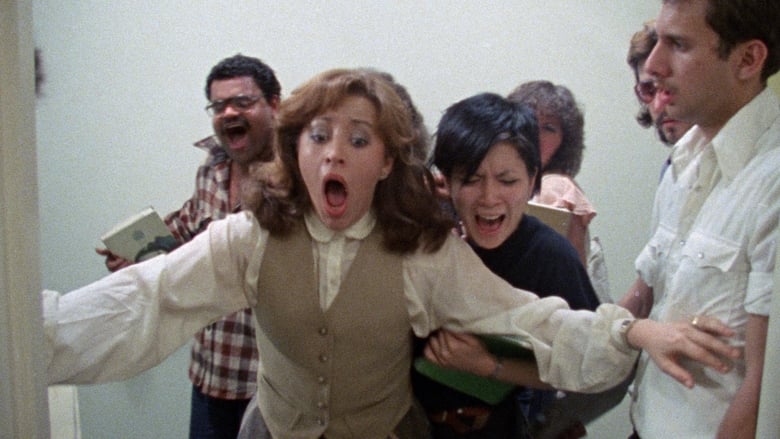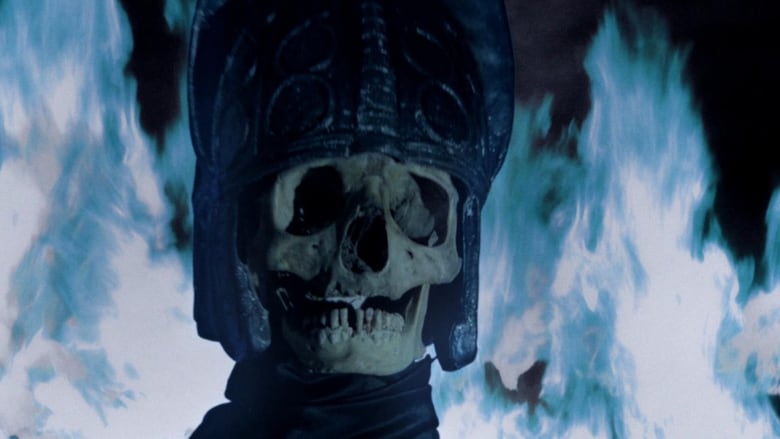While vacationing on a remote German island with his pregnant wife, an artist has an emotional breakdown while confronting his repressed desires.


Similar titles
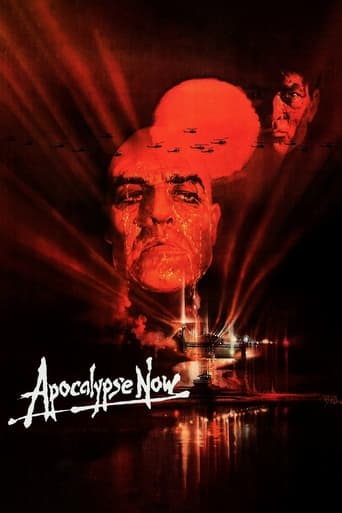
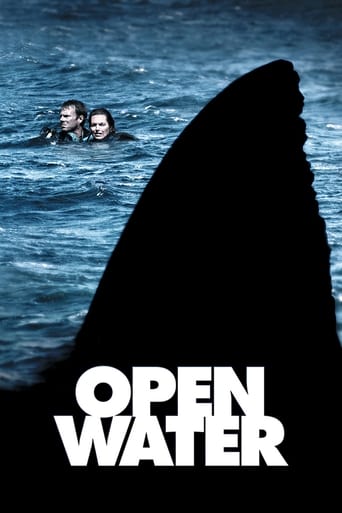
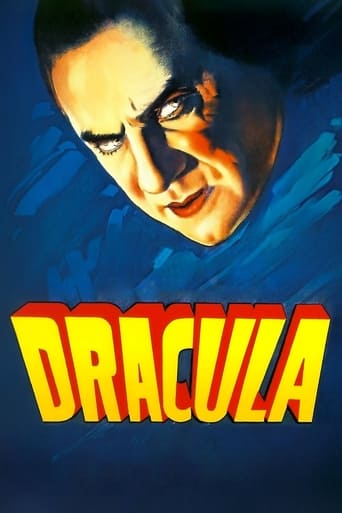
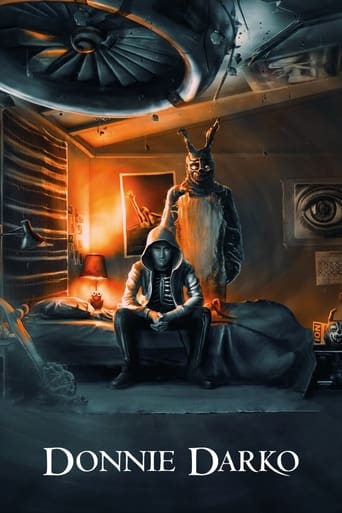
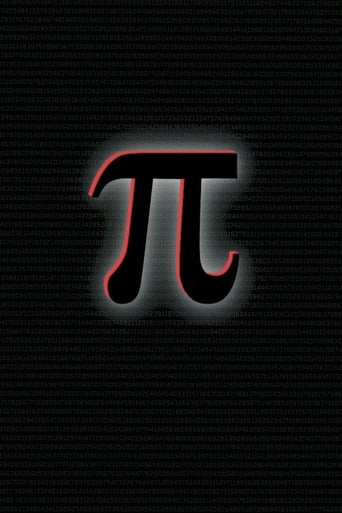

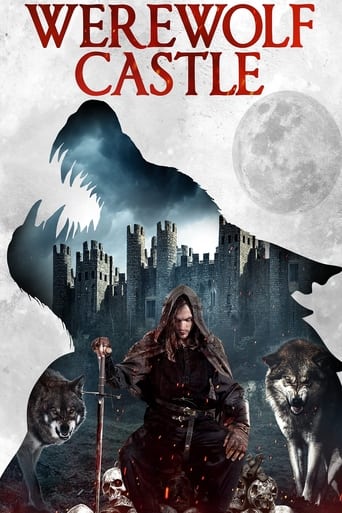
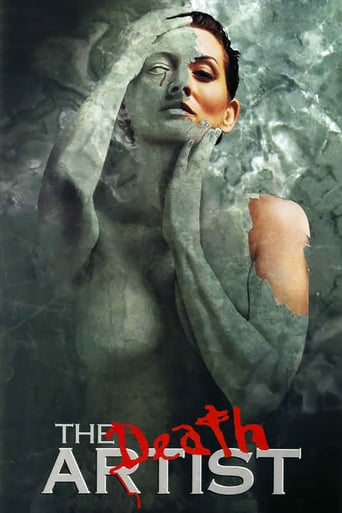
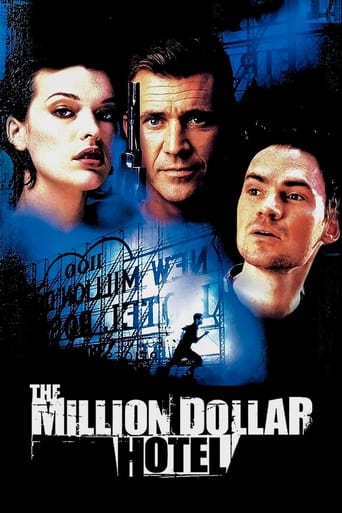
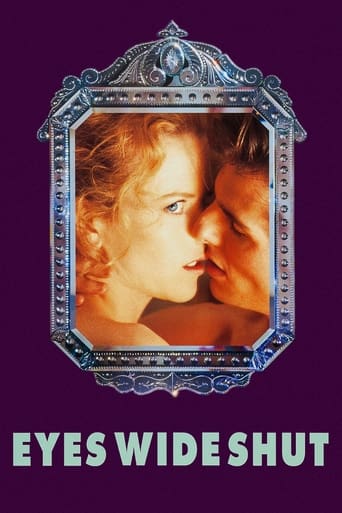
Reviews
Ingmar Bergman had had a penchant for short injections of fantasy into his films as far back as the chiaroscuro dream sequences of his forties 'neo-realist' dramas, although by the time of 'Vargtimmen' the hero (Max von Sydow) has moved up market and is now an artist in retreat from the world on a remote island who happens to have a neighbour - played by Erland Josephson - who lives in a castle occupied by a court of dinner-jacketed idlers.Based - like 'The Blair Witch Project' - on the diary of an individual who then disappeared without trace, relaxed 60's censorship permitted more explicit images than the vaguely Freudian nature of Bergman's earlier fantasies, like Ingrid Thulin baring herself for the camera while cackling fiendishly, and one of Bergman's sun-bleached nightmares in which Sydow bashes in the head of a young lad in speedos. Elsewhere there are creepy moments as when Josephson is depicted walking up a wall and Naima Wifstrand peels off her face and drops her eyeball into a wine glass; while Sydow prowls about at night like Vincent Price in one of Roger Corman's Poe adaptations - only shot by Sven Nykvist in glacial black & white rather than the hot Pathecolor hues of Floyd Crosby.
Last night I refamiliarized myself with an Ingmar Bergman film that might be the closest this great director ever came to doing a horror picture (other than, perhaps, "Through a Glass Darkly," and of course, "Scenes From a Marriage." LOL!). The film in question is "Hour of the Wolf," from 1968 (original Swedish title: "Vargtimmen"), starring Max Von Sydow and Liv Ullmann. In this B&W stunner, a couple comes to a very isolated island. The husband is a famous painter, and his wife of some five years is now pregnant. The artist, we soon gather, is very close to going mad, as he keeps seeing visions that may or may not be real, including bird people, a woman whose face comes off, and other monstrosities. He also thinks back to the time when he killed a young boy, although whether this ever truly happened or not is unclear. Liv, at one point, asks if two people who live together will soon start to resemble one another and think like the other, and I suppose that Bergman feels that that is indeed the case, as she too starts to see visions. There is no way in the film to ever tell what is real, what is memory, what is hallucination, what is symbolic and so on. Bergman achieves a creepy atmosphere almost effortlessly from the very first scene, in which Liv talks to the camera and tells her story in flashback. Ingrid Thulin, another Bergman regular, appears as Von Sydow's former flame in a surprisingly topless sequence. This is a beautiful film to look at, with outstanding cinematography by another Bergman regular, Sven Nykvist, and the acting by the two leads, need I even say, is world class. It is a picture that will surely be seen differently by everyone who experiences it, and is most certainly very open to interpretation. It is NOT a film for the lazy viewer, and is surely not an easy film. But it is a fascinating one, to be sure....
"The Hour of the Wolf" refers to that particular moment between night and day where sleep is at its deepest, where most dreams -consequently nightmares- gets the realest feeling, where most people die and are born, where we're at the most fragile and vulnerable state. In the end, it is such a fascinating accumulation of superlatives of creepy undertones, it would've been impossible for an explorer of the human condition like Ingmar Bergman not to tackle it.And to illustrate the eeriness of the titular notion, Bergman translates it into a mysterious pathology that took possession of a tortured artist's soul; a painter named Johan Borg and played by Max Von Sydow. The film is based on the fictional notes taken before his death (or disappearance?) and revealed in front of the camera by his widow (?) Alma, played by Liv Ullman. The two actors star again in a Bergmanian film in the same year than "Shame", Bergman's anti-war pamphlet but this is one more obscure and puzzling film, even by Bergman's standards.In fact, the film made me realize that despite the heavy psychological material carried by most Bergman movies, they were pretty much straight-forward about their subject and at the end, it was always a part of our human condition that revealed to us, mirrored by our relationship with time, with God, with the others. It's like each Bergman's movie played like a piece of puzzle that would constitute a magnificent and intelligent study of the human soul. But "The Hour of the Wolf" is one of these pieces of the puzzle you don't know where to put.This is not to separate the film from Bergman's other works, it's his first and –I guess- only take on supernatural and surrealistic material, and the result is aesthetically nightmarish and conveys well the horror inhabiting Johan's soul, but Bergman, as inaccessible as he is, always found a way to guide us to his characters, even at the price of a second viewing. I wanted to understand what was going into Johan's mind, was that sickness? Hallucinations? In a way, Alma mirrors these very feelings and like her, we want to know more about him.Some shadows of answers come when she sneaks into his diary, the reading episodes provide the first hints: one creepy dream involving a kid trying to kill him and an idyll with a girl named Vogler and played by Ingrid Thullin. Shot in high contrast and with a pretty furious editing, the kid's killing and drowning is one of the most disturbing sequences I've ever seen, my guess is that it supposed to evoke the repression of some childhood episodes, and maybe the child Johan kills is himself, the clue comes from his revelation of a childhood trauma later to Alma.The Vogler episode is echoed during a dinner where the couple meets a group of rich and eccentric slobs to the limits of perversity bourgeois (lead by Erland Josephson). They all seem to know about Johans' affair. They're obnoxious, uneducated, aggressive, one of the lady literally jumps at Johans, Josephson's wife implies that they try to take him from his wife, they're the closest players to the antagonists, and leave us a sentiment of total discomfort, like these creepy nightmares where we don't know where we are but can't wait to get the hell out.I guess "The Hour of the Wolf" encapsulates this feeling of continuous entrapment and impossibility to escape from a situation without getting through it, it's probably these repressed feelings that come back to the surface to better torture us. Maybe it's a surrealistic definition of guilt, guilt from one man's weakness. Which might explain that Johan decided to isolate himself from the world in the remote house leaving a peaceful and dull life with Alma, while he's lived quite a torturous and much more cinematically appealing life? And maybe the third act is the price he finally paid by not being totally sincere with his wife. It's made of a whole long sequence where they search Max in the forest, while he's in the castle and must play some twisted and pervert games, nudity, make-up, crows, all the most unsettling archetypes of nightmares are used and at the end, nothing but absence, absence of Max, of explanations "The Hour of the Wolf" leaves many interrogations, and so does the film. Right now, I'm still having this 'what the hell did I see?' expression I had when it ended.I certainly wouldn't be a fan of Bergman if I had seen this first, but because I'm a fan, I try to see the film with more magnanimous eyes. I can accept the absence of definite answers and the way Bergman drowns his work into his own creativity, my take is that Bergman invites us to embrace these moments where we're directly haunted by our own demons, where we must face the true facet of our personality, when the nightmare gets its realest feeling, perhaps the closest moment in life is when it looks like a nightmare."The Hour of the Wolf" is certainly the closest Bergman's film to a nightmare and I wonder if the deliberate noises he made at the beginning of the film were made to reassure us that we were only watching a film, as to insist that no matter how creepy this stuff is, it's still the product of one's imagination. I guess I prefer Bergman when he approaches our reality, but even the way we handle our reality is conditioned by our subconscious, and all the feelings we try to repress. Maybe this is "The Hour of the Wolf", this moment where for some reason; we have good reasons to act irrational.But I certainly wouldn't recommend it as a first Bergman's film.
Liv relates story of her life with Max through flashbacks. Max, a disturbed artist, relates profound stories through flashbacks within flashbacks, or they may just be nightmares or hallucinations, or Bergman may have spliced in footage from the wrong film. The couple goes to a party but are too depressed to have a good time. They don't sleep for weeks but try to bore each other to sleep through dull stories and philosophical rants. Strange characters randomly pop in and out, including a boy who bites, a man who walks up walls, and a woman who removes her face and soaks her eyeballs in water. Any coherence in the narrative is purely unintentional on Bergman's part.
